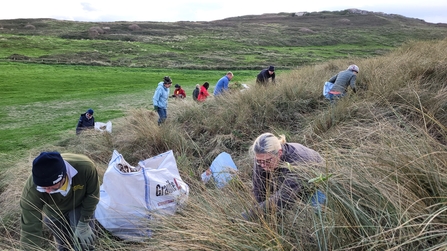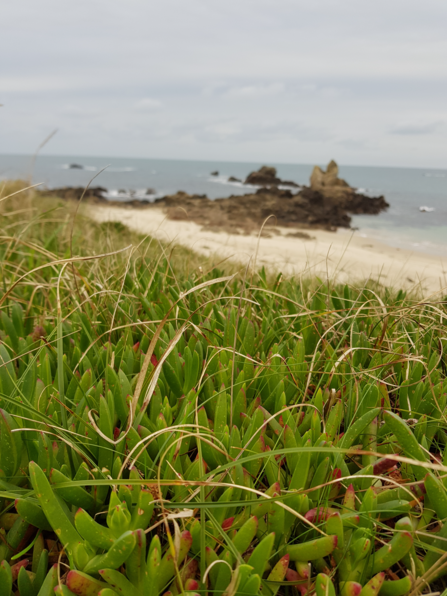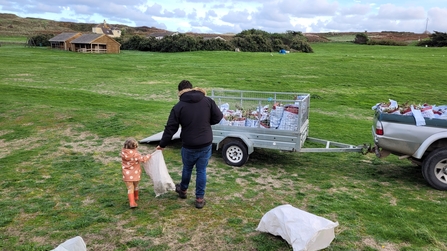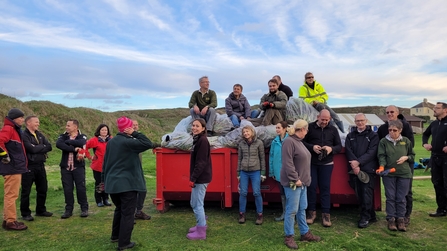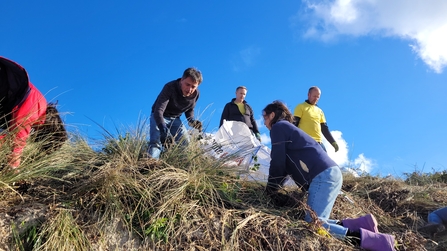
The GCV were formed in 1996 and since then they have worked hard to conserve Guernsey’s environment. Tasks the GCV undertake include reed bed clearing, tree care and removing invasive species, with Sour Fig eradication being one of their key projects. This is the second year the GCV have joined forces with us against Sour Fig. However, they have travelled over before to help with other tasks (such as tree planting).
Sour Fig is a species of succulent plant which is native to South Africa, with it first being recorded in Alderney in 1953, although its introduction is believed to be earlier. While it can be considered a ‘pretty’ plant with a pink and yellow flower, it is also one of the biggest threats to Alderney’s coastal habitats. The species is also a leading threat to Guernsey’s natural world (with it being introduced to the island in 1886 as a garden plant).
Sour Fig is a flat-growing plant which threatens other species by forming dense mats, making them hard to penetrate, and also spreads easily. New patches can grow quickly from small pieces of the stem. Sour Fig threatens Alderney’s coastal grasslands, home to many native wildflowers and grasses including the endemic Alderney Sea Lavender.


